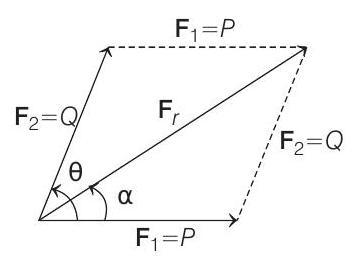Laws of Motion 5 Question 1
1. Two forces
(a)
(b)
(c)
(d)
Show Answer
Answer:
Correct Answer: 1. (b)
Solution:
- Resultant force

In first case
In second case
By putting these values in Eq. (i), we get
From Eq. (ii) and Eq. (iii), we get;






